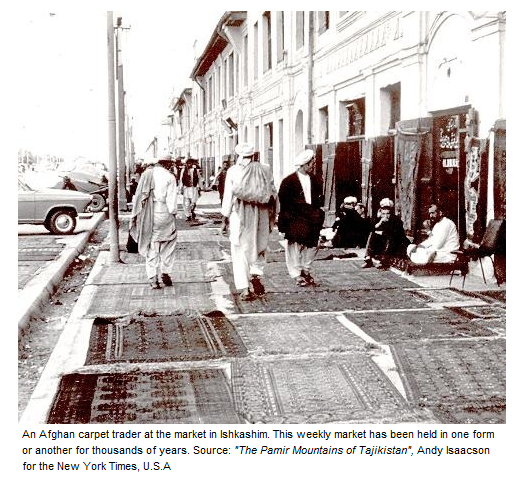Carpet weaving has always been an integral part of the Afghan heritage for centuries and with ethnic diversity drawn from varied other cultures as Iran, Pakistan, Tajikistan, Turkmenistan & Uzbekistan, it has been possible to translate all through the hands of the Afghan weavers. Afghan rugs, like Afghanistan itself, represent a diverse range of cultures and artistic sensibilities. With some drawing heavily on Persian influences, others from more Oriental styles, and still others reflecting the unique war history of Afghanistan. An Afghan rug is both an amazing piece of art and a pinnacle of craftsmanship.
Afghan rugs are solid, durable and often charming. They reflect the heritage of cottage-based craftsmanship passed through generations of families. Carpets from Afghanistan can be divided into two branches:
- Turkmen Carpets (also known as Turkoman)
- Baluchi Carpets

Most of these carpets have more in common with the tribal weaving's of Central Asia in terms of color, design, and weave than with their sophisticated Persian counterparts. Most Afghan weavers make rugs that are about the same as those they have woven for decades. Their carpets are often woven on small portable looms and are mainly produced to adorn the tents they live in. Most are made up of Persian knots and many feature vegetable-dyed hand spun Afghan wool. Natural dyes are still used, but since the 1950s pre-dyed wool yarn readily found in the towns and villages are often substituted for or combined with the natural dyes. Various qualities of pile carpets are available, ranging from coarse to medium in weave, including felted wool carpets (namads), flat non-pile fabric woven carpets (kilims), and pile and knotted carpets made from wool, silk, and cotton. As a testament to the meticulous nature of the art, one large Afghan carpet typically takes six to nine months to weave.

Afghan carpets usually refer to rugs traditionally made in Afghanistan. However, many of these carpets today are also woven by Afghan refugees who reside in Pakistan and Iran. Between 1979 and 1992, at least a million Afghans, including hundreds of thousands of rug-weavers, fled Afghanistan during its war with the Soviet Union and subsequent civil war, settling especially in Pakistan and Iran.

In the early 1980s, an Afghan rug style appeared that was unique from other Persian rug styles. This type of rug came out of the violent occupation of Afghanistan by the Soviet Union and is known as a war rug or Afghan war rug. While this type of rug's woven in a classic Persian style, it is the subject matter of the Afghan war rug that makes it so fascinating. Rather than basic geometric designs or historical patterns, the war rug contains iconic imagery of war. An Afghan rug of the war style might contain helicopters, light weaponry, heavy artillery, and tanks, all on the background of a more traditional rug style. The rugs are fascinating and vivid in their depiction of Soviet tanks and missiles, and they offer an interesting glimpse into an artistic culture besieged by war in the modern era. In the wake of the US invasion of Afghanistan to oust the Taliban government, a new wave of Afghan war rugs appeared, incorporating the military imagery of that action.
Afghanistan has always been famous for rugs. The impact of several decades of political turmoil has made an impact on its national art. Artisans have been weaving what are known as "war rugs" that depict weapons, military vehicles, and even the 9/11 World Trade Center attacks. Notice the dove in the center of the third carpet, indicating that the rug's maker isn't celebrating the attacks.

Afghan War rugs. Retrieved from the Bashir Persian Rugs Collection.

Sources and inspiration: Bérinstain, Valérie, et al. L'art du tapis dans le monde (The art of carpets in the world),. Paris: Mengès, 1996. Print.; Jerrehian Jr., Aram K.A. Oriental Rug Primer. Philadelphia: Running Press, 1980. Print.; Herbert, Janice Summers. Oriental Rugs, New York: Macmillan, 1982. Print.; Hackmack, Adolf. Chinese Carpets and Rugs, Rutland and Tokyo: Tuttle, 1980. Print. ; De Moubray, Amicia, and David Black. Carpets for the home, London: Laurence King Publishing, 1999. Print.; Jacobsen, Charles. Oriental Rugs A Complete Guide, Rutland and Tokyo: Tuttle, 1962. Print.; Bashir, S. (n.d.). Personal interview.; Web site sources and dates of consultation vary (to be confirmed). Without prejudice to official usage.


 Tapis d'Orient Bashir | Bashir Persian Rugs
Tapis d'Orient Bashir | Bashir Persian Rugs
 @tapisbashir
@tapisbashir
 @bashircarpets
@bashircarpets
 @bashircarpets
@bashircarpets